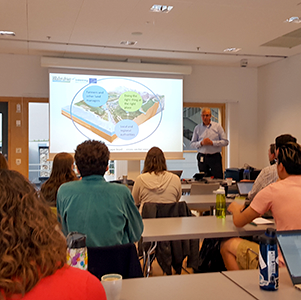The Baltic Sea and Chesapeake Bay are two bodies of water that share many common features. The water in both areas is defined not least by a similar gradient from fresh water upstream to brackish water to saltwater. On May 12-23, a course is held for a mixed group of students from Penn State University focusing on water quality. The students are also followed by a number of researchers and teachers.
- Most students study to be agronomists or environmental scientists, but some have a social sciences orientation. They read this course as a summer course outside of the regular semester, says organizer Karin Blombäck.
An exchange to improve water quality knowledge
This is the second time that SLU are host for this course, the first time was in 2016. The fact that the course is organized is due to a great interest from both Penn State University and SLU to continue and expand their scientific cooperation. In August 2018, a number of American researchers from, for example, Penn State University visited the Department of Soil and Environment and the Department of Water and Environment to establish contacts.
- It's great that Penn State University wants to station a two-week course here. As both students and researchers participate, we get response to the research and the environmental analysis we ourselves are doing linked to eutrophication problems. We also gain insight into what is being done at Penn State University and the water quality work that is being done within Chesapeake Bay's catchment area, says Karin.
